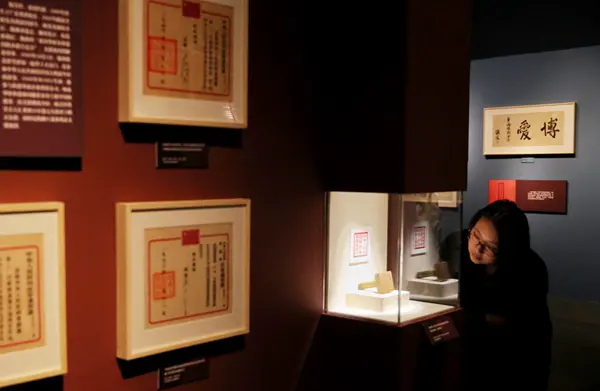What can you do when your doll is mangled, looking almost beyond repair?
Puzzled? Just take it to a doll "hospital."
In the heart of old Lisbon, there's one such facility that mends cracked heads, broken limbs or missing eyes of many a child's favourite toy – their doll.
"We have clients from all over the world and all ages," says Manuela Cutileiro, 72, the owner of Hospital de Bonecas. "There are museums which ask us to restore pieces, also private collectors, but the vast majority of our clients are individuals – people who are sentimentally attached" to their dolls.
Doll hospital owner Manuela Cutileiro.
The dolls all have a patient file and are painstakingly restored by the skilled hands of three women "surgeons," who give them a new body part or hair, chosen from drawers full of pieces of dolls, heads, limbs and eyes.
The establishment was founded in 1830 and is described in the tourist guides to Portugal's capital as one of the oldest doll hospitals still in operation.
"They say we are among the last in the world to do this work," says Cutileiro, a former school teacher.
But she shrugs off accolades. "We do our work in our little corner, without worrying about records or statistics."
Dolls in the "hospital".
Some 4,000 dolls can be found inside. There are 100-year-old dolls with porcelain heads, along with dolls dressed in costumes from different regions of Portugal, as well as some modern Barbies.
"For us, a contemporary doll is 20 or 30 years old. The old ones are those which are already centenarians," says Cutileiro, carrying on the family enterprise.
Its origins go back to the 19th century when "a little old lady", Carlota da Silva Luz, would make rag dolls, sitting in front of her herb shop in Praca da Figueira, where there was a large outdoor market.
A doll under repair.
Over time, the aromatic and medicinal herbs gave way to shelves of dolls, which today fill a window display at the entrance to the hospital, with a museum dedicated to them on the first floor.
And it seems as if the pace of times past continues at the doll surgery. No rush procedures there.
"We make sure that time passes less quickly here than it does outside," says Cutileiro. "People have to wait."
(AFP)
 简体中文
简体中文


